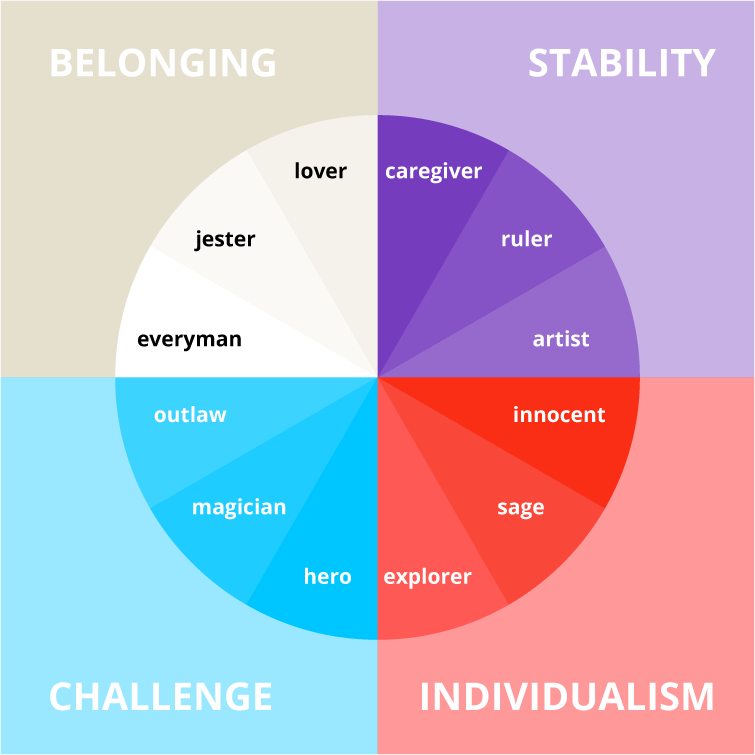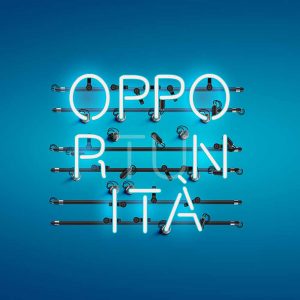Archetypes and branding in the digital age
Many companies have discovered the importance of archetypes in creating strong brands with a precise symbolic identity. That has been true for a long time. But the power of archetypes is becoming even more important in today’s processes of digital transformation.
Branding professionals know that in order to identify a valid brand strategy it is necessary to start from its deepest essence. There are numerous schemes and theories to identify this.
But since the book The Hero and the Outlaw: Building Extraordinary Brands through the Power of Archetypes, by Margaret Mark and Carol Pearson (McGraw Hill 2001) was published, the approach called archetypal branding has gained increasing approval.
Why are archetypes important?
This approach has proved to be extremely meaningful and at the same time very practical - capable of identifying the deep soul of a brand and guiding its strategic choices.
The model outlines 12 main archetypes (Innocent, Explorer, Sage, Hero, Outlaw, Magician, Regular Guy, Lover, Jester, Caregiver, Creator, Ruler).
What archetype am I?
If you don’t know, you may be missing the opportunity for a crucial reflection, on which it may depend that your marketing and communication levers are in line with the spirit of your brand and that your brand strategy stands out positively from those of your competitors. The archetypes in fact offer an exceptional framework for what the two authors call “the management of meaning”: that is, guiding the sphere of meaning that lies at the heart of every brand that inspires.
The theory of archetypes applied to branding is certainly about the life of brands in the physical world and traditional media (TV, press, radio), where they can communicate their products and services. However, confining this theory to that universe would be a mistake. Because brands today live a second life, no less important, in the digital dimension – where archetypes continue to be fundamental symbolic references.
A practical example of archetypal branding?
The archetype of the Magician has been the symbolic anchorage of Disney since this brand exists and has crossed with the same emotional strength different media such as comics, animated films on celluloid, songs, videos in electronic form. And it came in the shape of MagicBand to that sort of digital wand that allows visitors to Disney resorts to move around effortlessly, connecting to a series of choices and services designed to make the experience as unforgettable and magical as possible.
What are archetypes?
The question is legitimate, because the term was born from the great authors of psychoanalysis, and marketing has made a rather casual and not always clear use of it. Here we can define them as forms or images of symbolic value that are found with the same characters practically all over the world as constitutive elements of collective imagination and at the same time of each individual’s psyche. We all know what an Innocent, a Wise Man, a Hero or an Outlaw is. Identifying the archetype that corresponds to your brand is an indispensable step to work on its deep identity, from which to derive the correct forms of communication both internal and external.

Archetypal branding is becoming even more relevant as a result of the trend in favour of what have been named ’Autonomous Brands’.
As Ben Essen noted in an interesting article on Medium, in the future brands will compete in the ability to create conversations enhanced by AI. Forced by the logic of the web to enter into two-way communication, many of the most important brands are working to give greater depth and meaning to their online personality – at the same time as new conversational technologies make it extremely advantageous to rely on artificial systems. This process is not just about the well-known cases of Siri, Alexa and Cortana. A growing number of big players are investing substantial sums to rapidly advance their bots’ dialog capabilities in important areas such as customer care and recruiting.
These developments push us to go well beyond the boundaries of the old notion of brand personality, understood as a series of traits to be assigned to a brand to give it a semblance of humanity. Today, more and more brands must learn to face their users by themselves, managing conversations autonomously and in real time, and being credible as good actors entering the scene. For this reason, the artificial systems that animate them must be nourished on the level of ’character’, and to this end the reference to archetypes is of great use again. No one will ever be interested in dialoguing with anonymous, flat, indistinguishable bots. Technologies that allow intelligent systems to acquire more human traits – not excluding emotions – are progressing rapidly. And among the many branded bots that will start talking to us, we will certainly tend to prefer those that can manifest greater depth, tension and humanity, as well as a clearly identifiable character.
In a world where many brands will embrace these principles and technologies, the 12 archetypes proposed by Mark and Pearson risk not being enough: many brands may find themselves sharing the same symbolic figures, making themselves like each other. But the universe of archetypes is not necessarily limited to these; and in any case archetypes are at the origin of the multiform and fascinating world of myth, from which great brands have taken inspiration in the past and others may do so in the future. While companies go through the stages of their digital transformation by surrounding themselves with the most incredible technologies, it’s essential not to lose sight of the basic human need to go beyond what is superficial. Archetypes are perhaps the best way for brands to explore in depth the purpose of their existence.

 11 February 2020
11 February 2020

